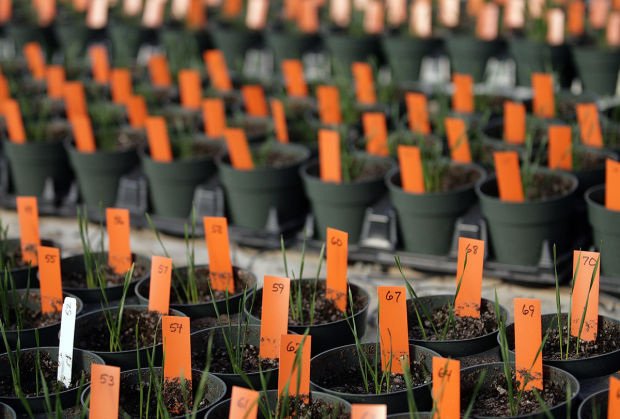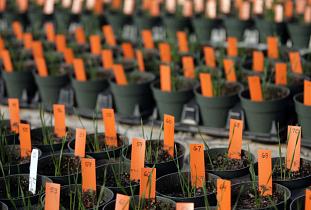Monsanto Is Inside Everything
Glyphosate, the active ingredient in Monsanto's Roundup herbicide, recently earned the ominous title of the most heavily-used agricultural chemical of all time.1
In fact, an analysis showed that farmers sprayed enough glyphosate in 2014 to apply 0.8 pounds of the chemical to every acre of cultivated cropland in the U.S., and nearly 0.5 a pound of glyphosate to all cropland worldwide.
As you might suspect, when you use this much of a chemical, it doesn't simply stay on the fields. Laboratory testing commissioned by the organizations Moms Across America and Sustainable Pulse revealed that glyphosate is now showing up virtually everywhere.
Monsanto's 'Gift' to Newborns
The analysis revealed glyphosate in levels of 76 μg/L to 166 μg/L in women's breast milk. As reported by The Detox Project, this is 760 to 1,600 times higher than the EU-permitted level in drinking water (although it's lower than the U.S. maximum contaminant level for glyphosate, which is 700 μg/L.)2
This dose of glyphosate in breastfed babies' every meal is only the beginning. An in vitro study designed to simulate human exposures also found that glyphosate crosses the placental barrier. In the study, 15 percent of the administered glyphosate reached the fetal compartment.
Angelika Hilbeck, Ph.D., senior scientist at the Institute of Integrative Biology in Zurich, told The Detox Project:3
"If confirmed in a full investigation, it seems that glyphosate has become a ubiquitous chemical in terms of presence and persistence.
This data also offers a first indication of potential accumulation in the human body, giving newborns a substantial dose of synthetic chemicals as a 'gift' for their start into life, with unknown consequences.
This is reckless and irresponsible conduct in a democratic society, which still has a living memory of previous reckless chemical contaminations, such as DDT."
Glyphosate Found in Blood and Urine Samples
The analysis revealed glyphosate in additional samples as well, including the blood of non-pregnant Canadian women. Their average level was 73.6 μg/L, which is similar to the concentration found to have endocrine-disrupting effects in vitro.
Further, glyphosate was also detected in urine samples, and U.S. women had maximum glyphosate levels that were more than eight times higher than levels found in urine of Europeans.
Where is the glyphosate exposure coming from? It's likely coming from food (although it could be in water as well). We don't know exactly how much glyphosate may be in your food because the U.S. Department of Agriculture (USDA) does not test for it.
The U.S. Food and Drug Administration (FDA) just announced in February 2016 that it would begin testing foods for glyphosate, however, which will help to quantify just how much glyphosate Americans are consuming.
For now, the analysis suggests that eating non-organic, genetically engineered (GE) foods (the prime candidates for Roundup spraying) is associated with higher glyphosate levels in your body. The Detox Project explained:4
"Glyphosate levels have been found to be significantly higher in urine of humans who ate non-organic food, compared with those who ate mostly organic food. Chronically ill people showed significantly higher glyphosate residues in their urine than healthy people.
In a separate detailed analysis, glyphosate was found in the urine of cows, humans, and rabbits. Cows kept in a GM-free area had significantly lower glyphosate concentrations in urine than cows in conventional livestock systems."
Glyphosate Is Contaminating Air and Water
Glyphosate and its degradation product, aminomethylphosphonic acid (AMPA), were detected in more than 75 percent of air and rain samples collected during the 2007 growing season in the Mississippi Delta agricultural region.5
This could be even higher now, as since 1996 the use of glyphosate has risen nearly 15-fold.6 The testing commissioned by Moms Across America also found glyphosate in 13 of 21 U.S. drinking water samples tested.7
They contained glyphosate levels between 0.085 ug/l and 0.33 ug/l, which is only slightly below the EU maximum allowed level for glyphosate in drinking water of 0.1 ug/l. The U.S. Environmental Protection Agency (EPA) standard for glyphosate in U.S. water supplies is 0.7 ppm.
Further, a 2012 analysis used a magnetic particle immunoassay to test for the presence of glyphosate in roughly 140 samples of groundwater from Catalonia, Spain. The analysis found that glyphosate was present above the limit of quantification in 41 percent of the samples.
This suggests the chemical does not break down rapidly in the environment, as its manufacturer claims, and instead it might be accumulating (both in the environment and in people).
Groundwater, which is water from rain, lakes, streams or other bodies of water that soaks into soil and bedrock, can easily become contaminated when chemicals in the soil with low biodegradability and high mobility empty into it.
When groundwater is used as a drinking water source, this contamination poses a risk to animals, plants and humans alike.
Glyphosate Is Sprayed on Some Crops Right Before Harvest
In northern, colder regions, farmers of wheat and barley must wait for their crops to dry out prior to harvest.
Rather than wait an additional two weeks or so for this to happen naturally, farmers realized they could spray the plants with glyphosate, killing the crop and accelerating their drying (a process known as desiccating).
Desiccating wheat with glyphosate is particularly common in years with wet weather and has been increasing in North Dakota and Upper Midwestern states in the U.S., as well as in areas of Canada and Scotland (where the process first began). One Canadian farmer told EcoWatch:8
"I think every non-organic farmer in Saskatchewan uses glyphosate on most of their wheat acres every year … I think farmers need to realize that all of the chemicals we use are 'bad' to some extent …
Monsanto has done such an effective job marketing glyphosate as 'safe' and 'biodegradable' that farmers here still believe this even though such claims are false."
What this means is that even non-GE foods are likely to be contaminated with glyphosate, and possibly even more so because they're being sprayed just weeks prior to being made into your cereal, bread, cookies and the like.
Many Crops Are Desiccated With Glyphosate, a 'Barbaric' Process
Along with wheat and oats, other crops that are commonly desiccated with glyphosate include:
Lentils Peas Non-GMO soybeans Corn Flax Rye and buckwheat Triticale Canola Millet Sugar beets Potatoes Sunflowers No one is keeping track of how many crops are being desiccated with glyphosate; those in the industry have described it as a "don't ask, don't tell policy."
Others have described spraying crops with glyphosate just days before harvest "barbaric." Charles Benbrook, Ph.D., a researcher involved in the recent study showing glyphosate use is increasing,

Comments
There are 0 comments on this post












